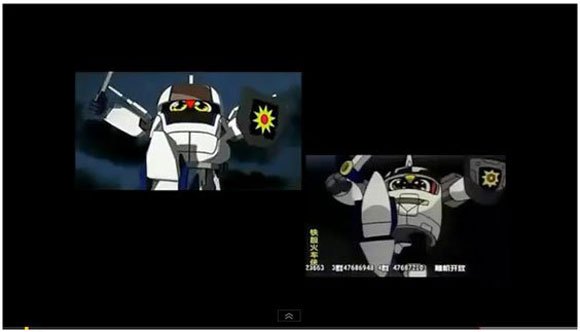
Over the past few years, China’s animation industry has greatly expanded and produced many all-new domestic works. However, these “original” animations have been placed under a lot of suspicion from sources both domestic and foreign for their blatant mimicry of Japanese and American animation sources. Many accuse China’s fledgling animation industry of relying on rip-offs to sell.
In response to these claims, an opinion piece titled “How Chinese Animation has Progressed Through ‘Imitation,’” was posted on one of China’s major cartoon and comics information sites. The column insists that China’s domestic animations should not be thought of as rip-offs but as inspired copies made for the sake of further developing their infant cartoon industry.
Since its original publication, this Chinese opinion piece has caught the attention of more than just fans and bloggers. In August, it was picked up by Japan’s Agency for Cultural Affairs, and it was even republished on the Chinese government’s official cultural division website. Here is a rough translation of the column’s contents:
“Lately, a lot of Chinese animation has come under suspicion. “This is stolen, a perfect rip-off, copy, no originality.” China’s domestically produced cartoons are currently under attack. Certainly, China’s inexperienced animators are no match for those in Japan and America. However, it is through imitation that we are progressing, and the increasing number of Chinese citizens watching domestic cartoons is proof of that.
“At present, many of China’s television shows and movies are under suspicion of being rip-offs. For example, the movie, 魁抜 (pronounced Kuiba), which was released in 2011 gave many of the nation’s young men a sense of déjà vu. Net users clamored that the series’ tone and characters had a distinctly Japanese feel, just like Dragon Ball.
“It happened again with a scene from 高鉄侠 (The Railway Boy) this July. Net users immediately speculated, “That’s been completely stolen from Japan’s ‘Choutokkyuu Hikarian JAPAN HIKARIAN RAILWAY.’”
“China’s viewers have become quite familiar with Japanese, Korean, and Western animation styles, such that when they see the slightest resemblance, they scream “rip-off.” Why not replace that word with one like “imitation.”
“Our Chinese domestic animation is late to develop, but we need to press forward. At the same time, we must plan for the future of Chinese animation. Chinese cartoon producers are continuing to develop. They are still thinking of how best to approach their works with more originality.”
According to the article above, the nuances of our language are influencing the way that we think about China’s budding animation industry. Rather than accuse the country’s animators of producing “rip-offs,” the author hopes to promote the classification of these pieces as “imitations,” a term with far fewer negative connotations. He sees China’s mimicry of other animation styles as a form of learning rather than a form of stealing. And who would blame them for wanting to learn from the best, taking elements from animated works which are already famous and have demonstrated a high level of success?
However, this does not change the fact that Chinese companies are pulling a profit from material which is not under their copyright. In the case of The Railway Boy and its original Japanese counterpart, Choutokkyuu Hikarian, it was not just the character designs which show some similarities, the entire six-minute story progression matches exactly!
I, like many others, anticipate the day that China is able to impress the world with some original animated works, but in the meantime, we should probably ask ourselves how much appropriation is acceptable and for how long it should be allowed to continue. Take a look at the videos below and decide for yourselves how to classify these animated works. Is this really a case of mimicry or thievery?
▼ On the right, you’ll see the Japanese series, Choutokkyuu Hikarian. On the left is China’s 2013 animation, The Railway Boy.
http://www.youtube.com/watch?v=4_ZbRRFqXhA#t=218
▼ Here is the first trailer for the Chinese animated movie, Kuiba, under some suspicion for its similarities to Dragon Ball.
http://www.youtube.com/watch?v=tBDKKvBPyRA
▼ And here is the trailer for Kuiba’s sequel.
References: Sina Video and VASOON on YouTube
[ Read in Japanese ]